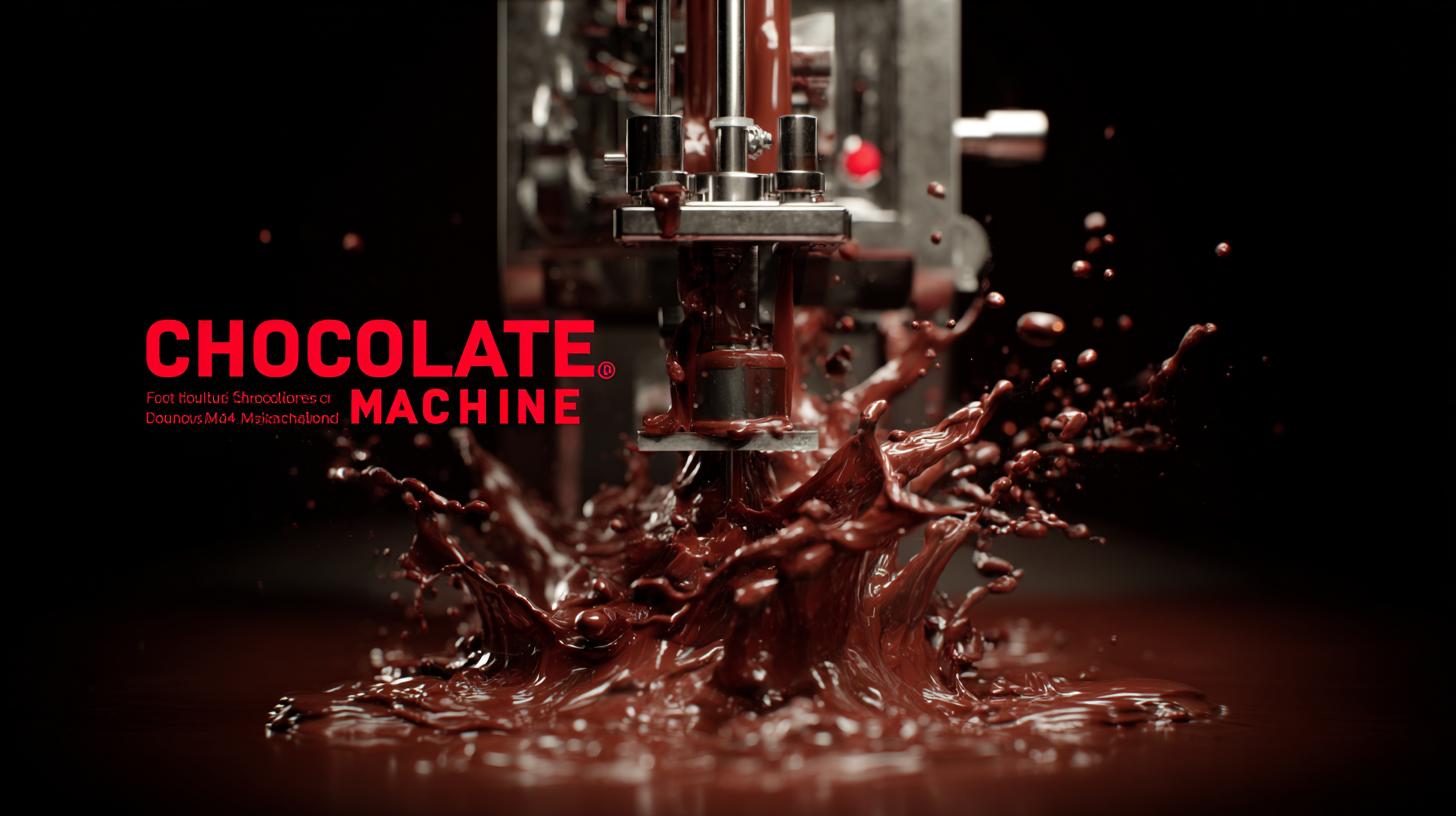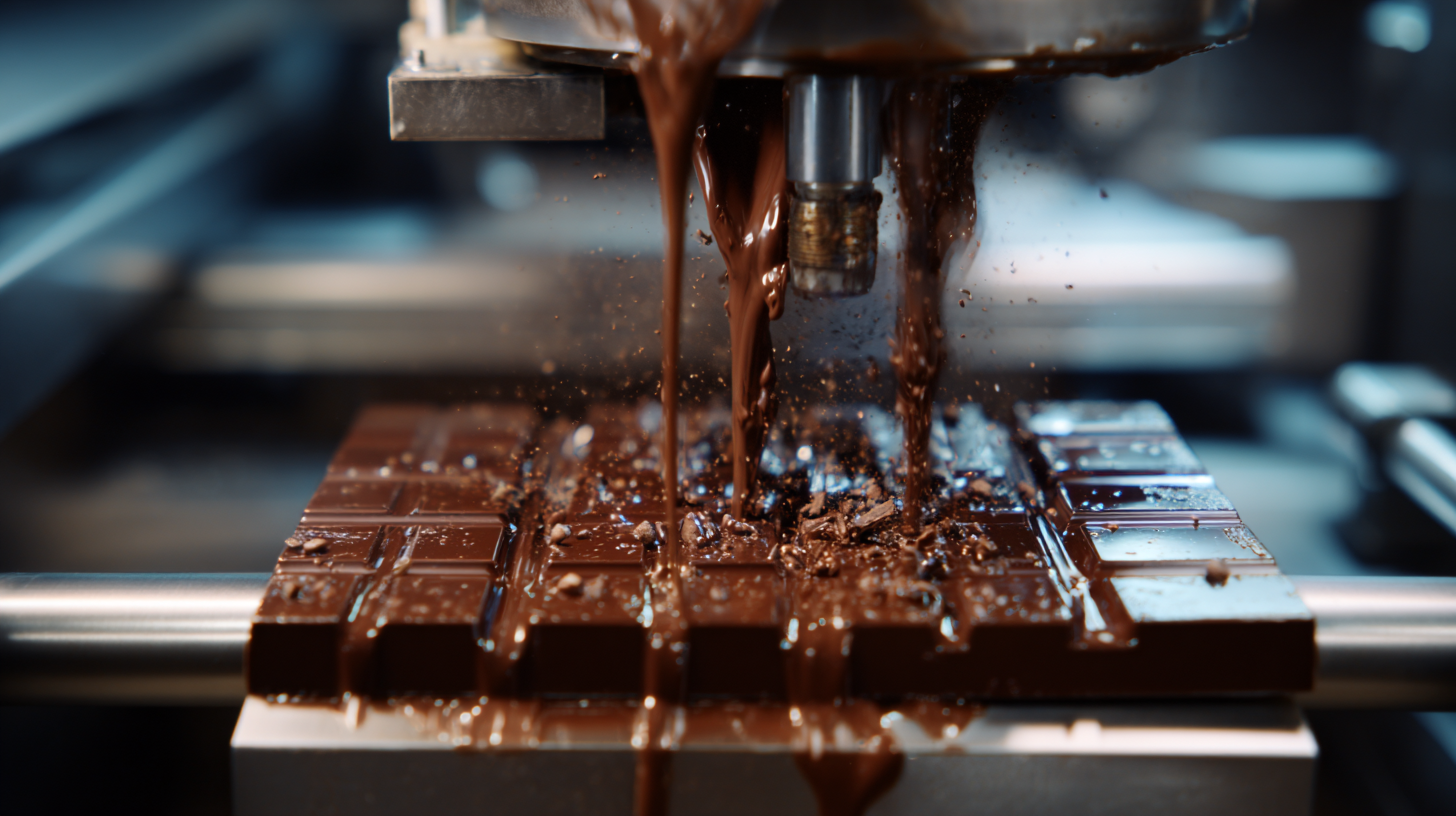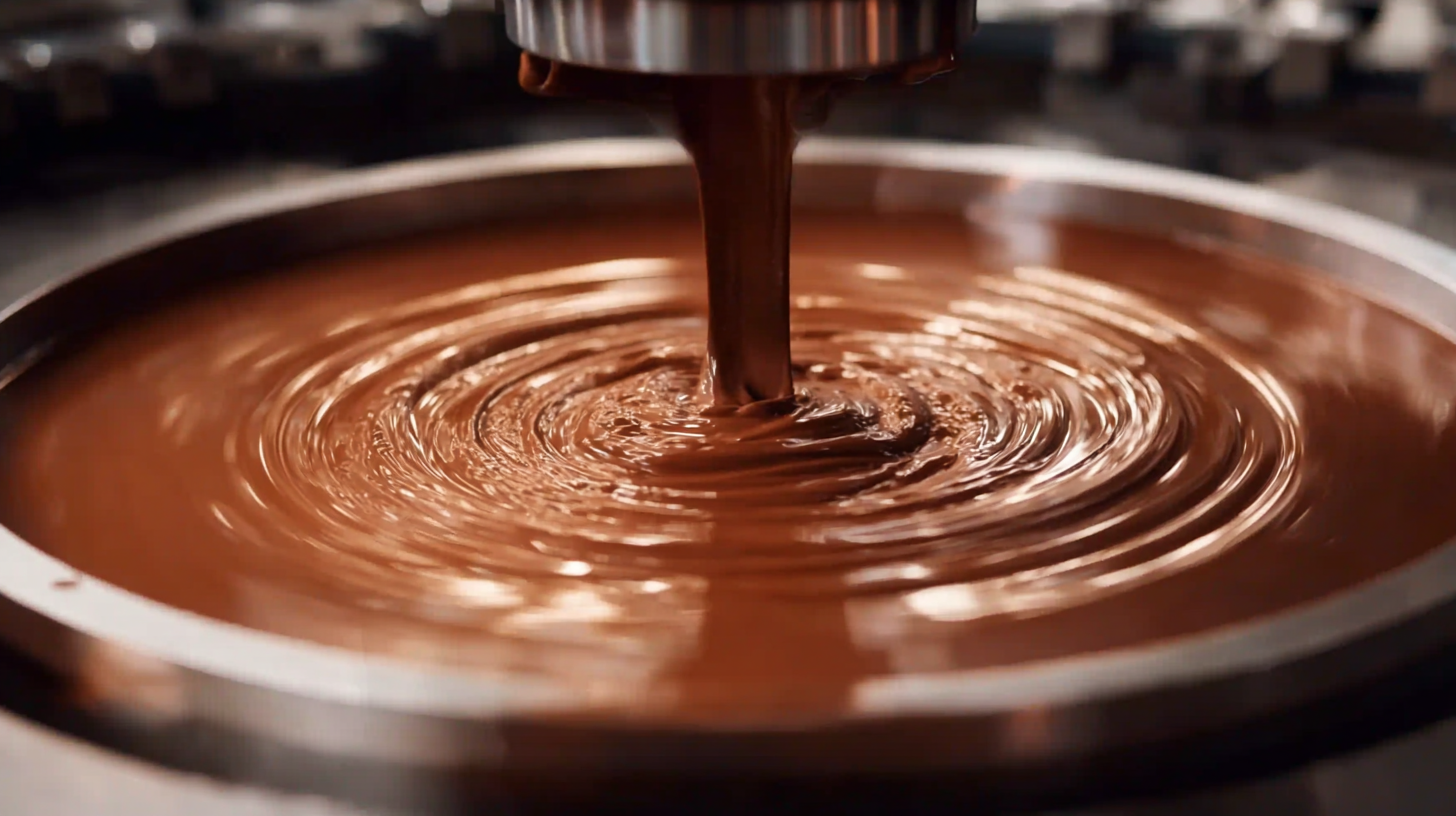Exploring the Future of Chocolate Depositing Machines: 2025 Trends and Innovative Alternatives
As we look ahead to 2025, the chocolate industry is poised for significant transformations, driven by evolving consumer preferences and technological advancements. One pivotal element in this evolution is the chocolate depositing machine, which has seen remarkable growth in adoption across various confectionery sectors. According to a recent report by Mordor Intelligence, the global chocolate processing equipment market is projected to reach USD 6.5 billion by 2025, with chocolate depositing machines playing a crucial role in this surge. These machines not only enhance production efficiency but also allow manufacturers to innovate with unique shapes and textures that cater to an increasingly discerning market.

As sustainability and automation become significant trends, the chocolate depositing machine is set to evolve, integrating new features that prioritize eco-friendliness and operational efficiency. This blog will explore the upcoming trends and innovative alternatives shaping the future of chocolate depositing technologies.
Current State of Chocolate Depositing Technology
The current state of chocolate depositing technology has evolved significantly, driven by advancements in machinery and a growing demand for customization in the confectionery industry. According to a recent report by Mordor Intelligence, the global chocolate market is projected to reach approximately $170 billion by 2025, creating substantial opportunities for innovation in chocolate depositing machines. Manufacturers are increasingly investing in high-speed, precision depositing systems that allow for a greater variety of shapes and sizes, catering to consumer preferences for unique products.
Recent trends also point to a surge in the use of automation and smart technology within chocolate depositing machines. A report from Research and Markets highlights that the integration of IoT (Internet of Things) in food processing equipment is set to grow, with an expected CAGR of around 11% over the next five years. This trend enables real-time monitoring and control of the depositing process, enhancing efficiency and reducing waste. As the industry continues to evolve, chocolate manufacturers are prioritizing these technologies to improve productivity while meeting the dynamic demands of the market.
Trends in Chocolate Depositing Technology (2025)
Key Innovations and Trends in Chocolate Depositing Machines for 2025
As we approach 2025, the chocolate industry is poised for transformative advancements in chocolate depositing machines. One of the key innovations is the integration of smart technology. These machines are becoming increasingly equipped with IoT capabilities, allowing for real-time monitoring and optimization of production processes. By utilizing data analytics, manufacturers can fine-tune their recipes and processes, ensuring a consistent quality while reducing waste and energy consumption.
Another trend is the move towards sustainable practices, which are becoming a crucial focus for manufacturers. In 2025, expect to see machines designed with eco-friendly materials and energy-efficient operations. Additionally, the rise of plant-based and alternative chocolates is prompting machine designs that can easily switch between different types of chocolate, accommodating a broader range of consumer preferences. This flexibility will not only support the growing demand for diverse chocolate products but also enable producers to innovate and experiment with new flavors and textures, paving the way for a dynamic future in chocolate manufacturing.
Exploring the Future of Chocolate Depositing Machines: 2025 Trends and Innovative Alternatives
| Innovation Type | Description | Expected Impact | Market Adoption Level |
|---|---|---|---|
| Automation Integration | Incorporating automated processes to increase efficiency and reduce labor costs. | Higher production rates and lower operational costs. | High |
| Sustainable Materials | Use of eco-friendly materials and processes in manufacturing chocolate depositing machines. | Reduction in environmental impact and improved brand perception. | Medium |
| Smart Technology | Implementing IoT and AI for real-time monitoring and data analytics. | Enhanced decision-making and operational efficiency. | Medium to High |
| Customization Features | Machines that allow for personalized chocolate designs and flavors on demand. | Increased consumer engagement and satisfaction. | High |
| Energy Efficiency | Designs aimed at reducing energy consumption during the chocolate depositing process. | Cost savings and a smaller carbon footprint. | High |
Sustainability in Chocolate Production: Eco-Friendly Alternatives
As the chocolate industry faces skyrocketing cocoa prices and environmental challenges, the shift towards sustainability is more critical than ever. Innovative approaches such as using coffee waste to create chocolate not only lower the carbon footprint of production but also address the urgent need for alternatives to traditional cocoa. With significant growth predicted in eco-friendly chocolate innovations, industry players are urged to embrace new materials and methods that prioritize sustainability, as these could meet the rising consumer demand for ethical products.
Tips for Sustainable Chocolate Production:
1. Explore alternative ingredients, such as upcycled cocoa butter, to reduce reliance on traditional cocoa.
2. Consider partnerships with startups focused on sustainable sourcing and circular economy practices, like transforming
cocoa waste into bioplastics, to offset environmental impacts.
3. Invest in lab-grown chocolate technologies that offer a cocoa-free option, significantly lowering the ecological
footprint while appealing to health-conscious consumers.
With these advancements, the chocolate industry has the potential to revolutionize its practices and cultivate a more sustainable future, paving the way for healthier choices that align with consumers' values.

Impact of Automation on Chocolate Manufacturing Efficiency
The chocolate manufacturing industry is currently undergoing a significant transformation driven by automation and advanced technologies. With companies increasingly adopting automated systems, the focus on efficiency and productivity is at an all-time high. Recent initiatives have highlighted the shift towards digitization, which not only enhances visibility in the supply chain but also streamlines production processes. The integration of real-time data sharing enables manufacturers to respond swiftly to market demands, ultimately creating a more agile operation that can cope with the fast-paced nature of consumer preferences.
 Moreover, the introduction of robotics and artificial intelligence is revolutionizing the way chocolate products are created. Innovative solutions are being implemented to optimize everything from production lines to quality assurance, ensuring that waste is minimized and output is maximized. As these technologies become more prevalent, companies are seeing the benefits of reduced labor costs while simultaneously improving the consistency and quality of their offerings. This shift highlights a fundamental change in the industry, where traditional methods are being enhanced by a modern technological foundation, thereby setting the stage for a new era of chocolate manufacturing.
Moreover, the introduction of robotics and artificial intelligence is revolutionizing the way chocolate products are created. Innovative solutions are being implemented to optimize everything from production lines to quality assurance, ensuring that waste is minimized and output is maximized. As these technologies become more prevalent, companies are seeing the benefits of reduced labor costs while simultaneously improving the consistency and quality of their offerings. This shift highlights a fundamental change in the industry, where traditional methods are being enhanced by a modern technological foundation, thereby setting the stage for a new era of chocolate manufacturing.
Future Challenges and Opportunities in the Chocolate Industry
The chocolate industry is poised for significant transformation as we look towards 2025, facing both challenges and opportunities shaped by emerging consumer behaviors and technological advancements. In recent years, the Chinese snack market has shown remarkable growth, paving the way for innovative chocolate products that cater to evolving consumer preferences. Reports indicate that the chocolate sector in China is expected to expand at a CAGR of over 10% until 2025, driven by younger demographics seeking premium and artisanal options.
As chocolate depositing machines evolve, they play a crucial role in meeting this rising demand for customization and variety. The advent of smart automation technologies in chocolate production is anticipated to enhance efficiency and precision, reducing waste and production costs. Moreover, the push for sustainability in sourcing cacao is becoming increasingly vital.
Companies are now looking to implement ethical sourcing practices to combat issues such as child labor in cocoa production, especially in regions where these challenges are rampant. By 2025, the integration of innovative alternatives—such as plant-based and health-oriented chocolates—will not only address consumer health concerns but also create a broad and inclusive industry landscape.